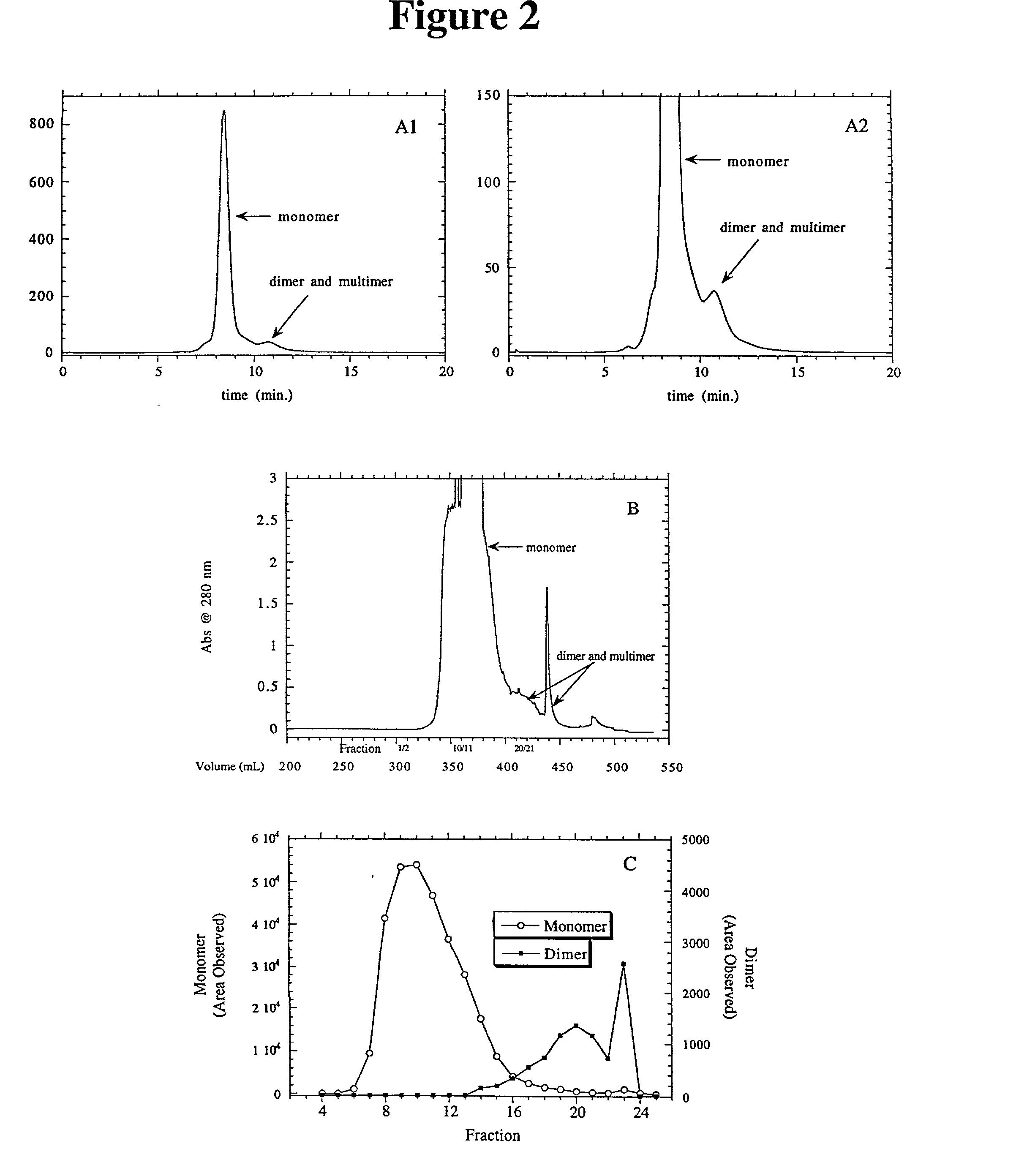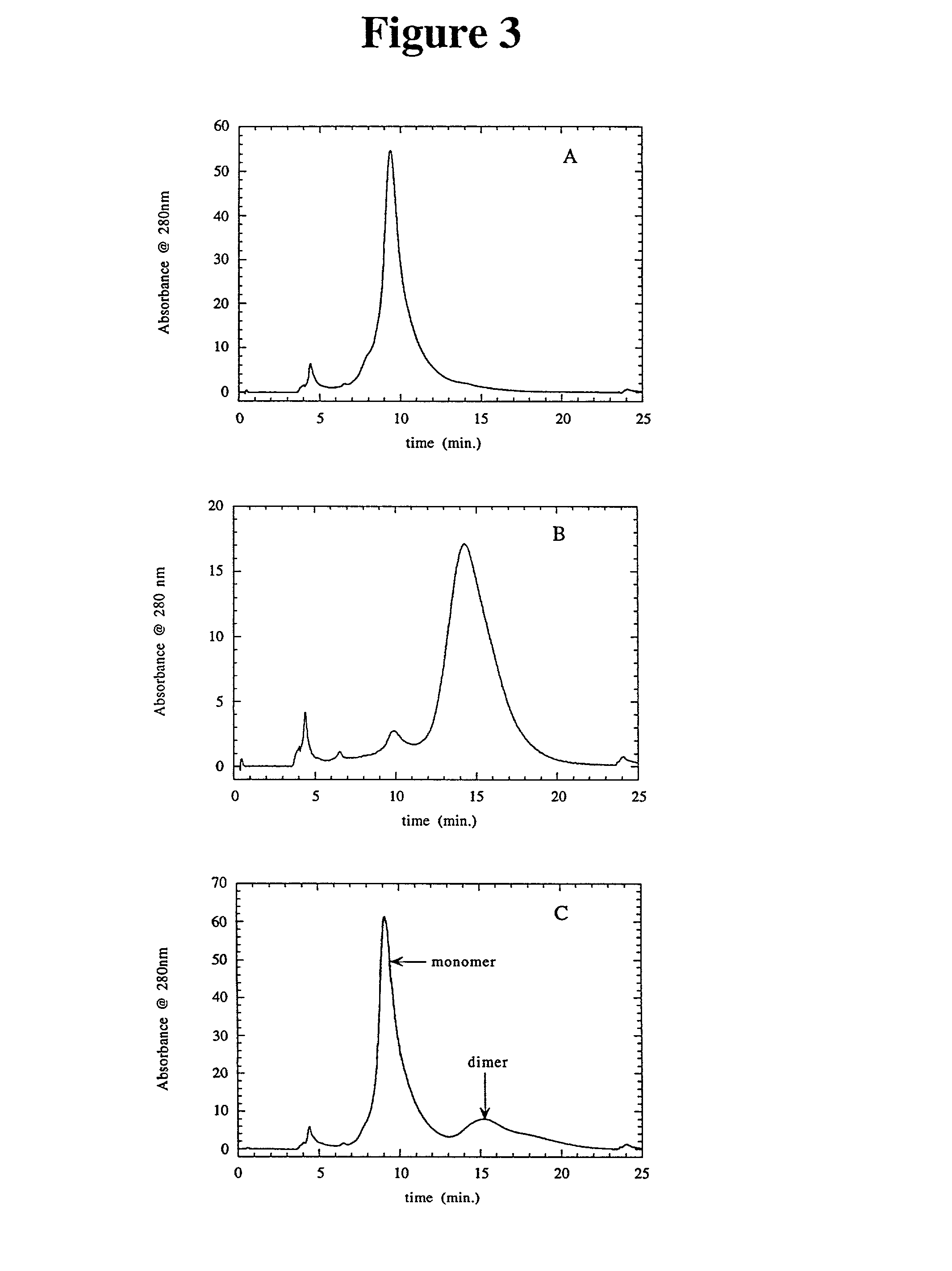Separation of polypeptide monomers
a polypeptide monomer and polypeptide technology, applied in the field of polypeptide monomer separation, can solve the problems of difficult purification, low yield of authentic monomers, and failure to properly fold proteins from recombinant hosts
- Summary
- Abstract
- Description
- Claims
- Application Information
AI Technical Summary
Benefits of technology
Problems solved by technology
Method used
Image
Examples
Embodiment Construction
[0034] This example shows the separation of anti-IgE monomers and bovine serum albumin monomers from dimers and multimers.
[0035] MATERIALS AND METHODS:
[0036] Resins:
[0037] Pharmacia Q-SEPHAROSE FAST FLOW.TM.. 4 mL to 235L bed volumes evaluated
[0038] Pharmacia RESOURCE S and RESOURCE Q.TM.: 1 mL prepacked columns
[0039] J T Baker CSx.TM., 0.46.times.5 cm, 5.mu. particles
[0040] Proteins:
[0041] A. Humanized anti-IgE monoclonal antibodies (IgG.sub.1) available from Genentech, Inc.: pI.about.7.5, designated as E25 and E26. WO 93 / 04173 published Mar. 4, 1993 describes humanized anti-IgE antibodies wherein a murine antibody directed against human IgE (MaE11) was used to provide the CDR regions that were substituted into an IgG1 immunoglobulin framework (rhuMaE25). See also Cacia et al., Biochemistry, 35: 1897-1903 (1996) for studies and further descriptions of E-25.
[0042] B. Monoclonal anti-IgE antibody prepared from the culture supernatants of an immortalized human myeloma cell line U266B1...
PUM
| Property | Measurement | Unit |
|---|---|---|
| pH | aaaaa | aaaaa |
| pH | aaaaa | aaaaa |
| pH | aaaaa | aaaaa |
Abstract
Description
Claims
Application Information
 Login to View More
Login to View More - R&D
- Intellectual Property
- Life Sciences
- Materials
- Tech Scout
- Unparalleled Data Quality
- Higher Quality Content
- 60% Fewer Hallucinations
Browse by: Latest US Patents, China's latest patents, Technical Efficacy Thesaurus, Application Domain, Technology Topic, Popular Technical Reports.
© 2025 PatSnap. All rights reserved.Legal|Privacy policy|Modern Slavery Act Transparency Statement|Sitemap|About US| Contact US: help@patsnap.com



